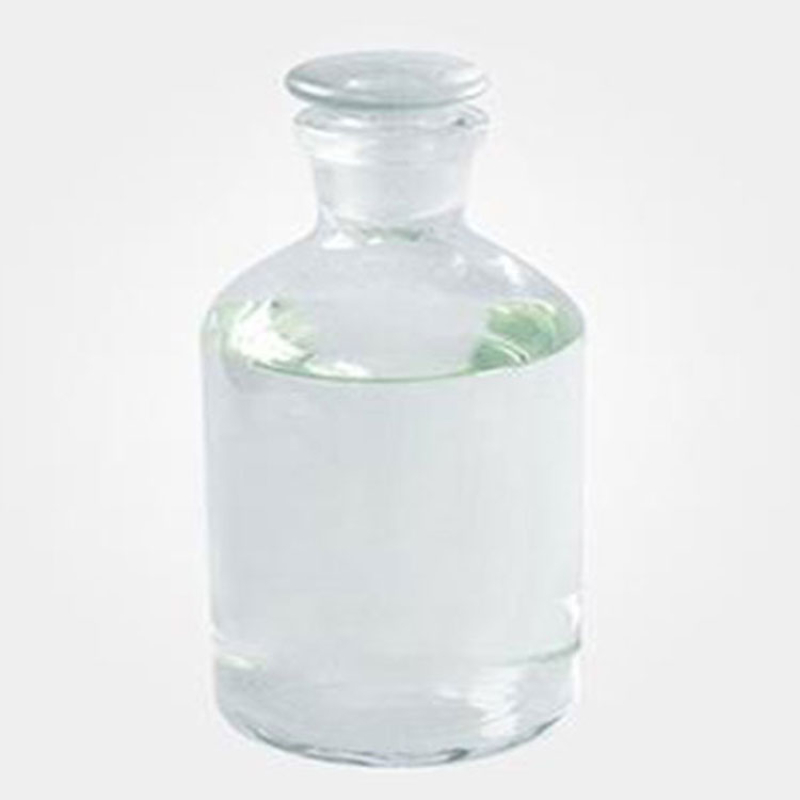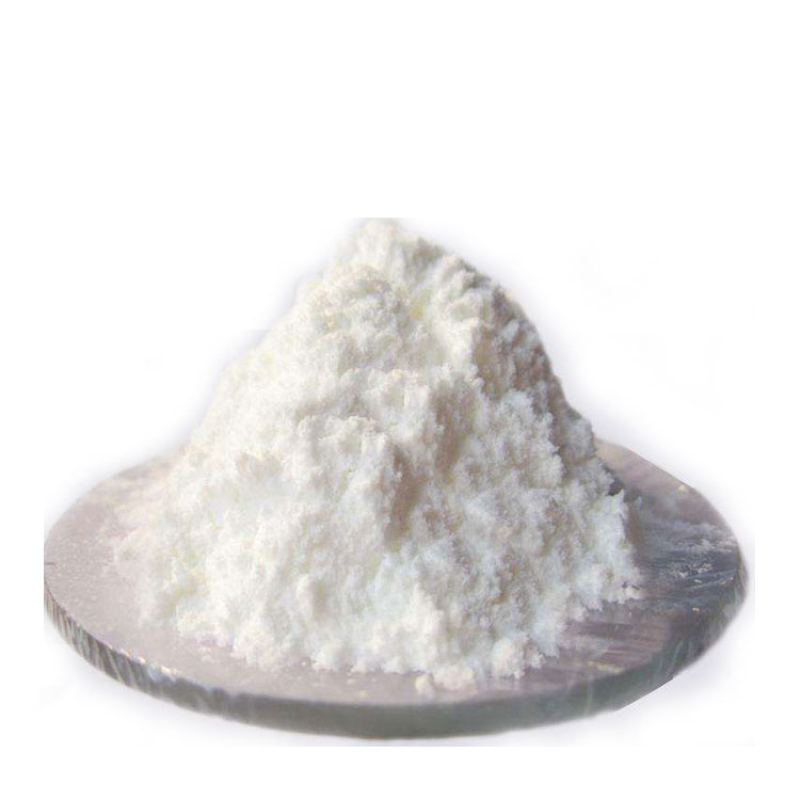Products Description of 1-Bromo-3,5-dimethoxybenzene CAS#20469-65-21-Bromo-3,5-dimethoxybenzene is an organic intermediate that can be prepared from 3,5-dimethoxyaniline by diazotization.
Contact Now
Monopotassium phosphite CAS#13977-65-6Potassium dihydrogen phosphite, a chemical with the molecular formula KH2PO3, can be used as a direct bactericide and complexing agent for calcium and magnesium ions in industrial circulating water.
Contact Now
Products Description of Anthraquinone CAS#84-65-1Anthraquinone, with the chemical formula C14H8O2, is a quinone compound that is naturally occurring and can also be artificially synthesized. It is a significant organic compound known for its diverse applications, particularly in the pharmaceutical and dye industries. Anthraquinone is characterized by its conjugated structure, which gives it a distinctive color and makes it a key component in the synthesis of various dyes.
Contact Now
Products Description of Bilirubin CAS#635-65-4This product is mainly derived from the reduction product of heme in hemoglobin through a series of catabolism after the disintegration of aging red blood cells. It is golden yellow or dark reddish brown monoclinic crystal, odorless and tasteless. Soluble in organic solvents such as benzene, chloroform and carbon disulfide; also soluble in hot mixture of ethanol and chloroform; sodium salt is easily soluble in water, but calcium salt, magnesium salt and barium salt are insoluble in water.
Contact Now
Products Description of ATP Disodium Salt CAS#987-65-5DISODIUM ADENOSINE TRIPHOSPHATE, alias: 5'-adenosine triphosphate disodium salt. Adenosine triphosphate disodium is mainly used as a skin conditioner in cosmetics and skin care products.
Contact Now
Products Description of N-LAUROYL-L-GLUTAMIC ACID CAS#3397-65-7N-(1-oxododecyl)-L-glutamic acid (9CI) is a chemical whose English name is L-Glutamicacid, N-(1-oxododecyl)-.N-LAUROYL-L-GLUTAMIC ACID Chemical PropertiesMelting point 95-96 °CBoiling point 543.6±40.0 °C(Predicted)density 1.081±0.06 g/cm3(Predicted)storage temp. Sealed in dry,Room Temperaturesolubility Aqueous Base (Slightly), Chloroform (Slightly)form Solidpka3.46±0.10(Predicted)color White to Off-WhiteLogP2.964 (est)EPA Substance Registry SystemL-Glutamic acid, N-(1-oxododecyl)- (3397-65-7)
Contact Now
Products Description of 1-Methoxy-2-propyl acetate CAS#108-65-6Propylene glycol methyl ether acetate (PGMEA), also called propylene glycol monomethyl ether acetate, has the molecular formula C6H12O3. It is a colorless hygroscopic liquid with a special odor. It is a non-pollution solvent with multiple functional groups. It is mainly used as a solvent for inks, paints, inks, textile dyes, and textile oils. It can also be used as a cleaning agent in the production of LCD displays.
Contact Now
Products Description of 4-Chlorophenethylamine CAS#156-41-24-Chlorophenethylamine is an organic compound with the molecular formula: C8H11ClN.Chemical PropertiesBoiling point 60-65 °C0.1 mm Hg(lit.)density 1.112 g/mL at 25 °C(lit.)refractive index n20/D 1.548(lit.)Fp 223 °Fstorage temp. Store Coldpka9.72±0.10(Predicted)form Liquidcolor Clear colorless to yellowSpecific Gravity1.12BRN 508247InChIKeySRXFXCKTIGELTI-UHFFFAOYSA-NCAS DataBase Reference156-41-2(CAS DataBase Reference)Safety InformationHazard Codes Xi
Contact Now
Products Description of Cobalt bis(2-ethylhexanoate)CAS#136-52-7Purple liquid.Cobalt bis(2-ethylhexanoate) Chemical Propertiesdensity 1.002 g/mL at 25 °Cvapor pressure 5Pa at 25℃Fp 104 °Fform liquidcolor purpleWater Solubility 40.3g/L at 20℃CAS DataBase Reference136-52-7(CAS DataBase Reference)EPA Substance Registry SystemHexanoic acid, 2-ethyl-, cobalt(2+) salt (136-52-7)Safety InformationHazard Codes Xn,NRisk Statements 10-36/37/38-40-43-66-65-62-50/53Safety Statements 26-36/37-62-61RIDADR UN 1268 3/PG 3WGK Germany&nb
Contact Now
Products Description of 3-Methoxythiophene CAS#17573-92-13-Methoxythiophene is an important intermediate in organic synthesis.3-Methoxythiophene Chemical PropertiesMelting point 49-50 °C(Solv: ethyl ether (60-29-7); ligroine (8032-32-4))Boiling point 80-82 °C/65 mmHg (lit.)density 1.143 g/mL at 25 °C (lit.)refractive index n20/D 1.532(lit.)Fp 121 °Fstorage temp. Keep in dark place,Inert atmosphere,2-8°Cform Liquidcolor Clear light brownSensitive Air SensitiveBRN 106404LogP1.810 (est)CAS DataBase Reference17573-92-1(CAS DataB
Contact Now
Products Description of 5-Aminoisoquinoline CAS#1125-60-65-Aminoisoquinoline is an organic compound with the chemical formula C9H8N2.5-Aminoisoquinoline Chemical PropertiesMelting point 125-128 °C (lit.)Boiling point 312.78°C (estimate)density 1.1148 (estimate)refractive index 1.7080 (estimate)storage temp. Keep in dark place,Sealed in dry,Room Temperaturesolubility Chloroform, Ethyl Acetate, Methanolpka5.67±0.13(Predicted)form Crystalline Powdercolor Yellow-brownSensitive Light SensitiveBRN 114465CAS DataBase Reference1125-60-6(CAS D
Contact Now
Products Description of Benzyldimethylhexadecylammonium Chloride CAS#122-18-9Cetaxel chloride, also known as hexadecyl dimethyl benzyl ammonium chloride, is a cationic quaternary ammonium surfactant and one of the components of benzalkonium chloride (benzalkonium chloride is a mixture of benzyl alkyl dimethyl ammonium, in which the alkyl groups are mainly n-C12H25 (dodecane), n-C14H29 (tetradecane) and n-C16H33 (hexadecane)).Benzyldimethylhexadecylammonium chloride Chemical PropertiesMelting point 55-65 °C(lit.)Boiling point 550.14°C (rough estimate)density 0.9089 (rou
Contact Now
(2-hydroxytrimethylene)bis(trimethylammonium) dichloride Chemical PropertiesMelting point 256-257 °C (decomp)Factory and Equipment ShowFast delivery timeInventory 2-3 working days New production 7-10 working days
Contact Now
Products Description of Thiourea dioxide CAS#1758-73-2Thiourea dioxide is also known as carboxamidine sulfinic acid and aminoiminomethanesulfinic acid. It is a stable compound with neither oxidizing nor reducing properties. It is precipitated from ethanol as colorless to white needle-shaped crystals or crystalline powder. It is odorless. Relative molecular weight 108.12. Relative density 1.4. Melting point 126℃ (decomposition). The solubility in water at room temperature is 2% to 3%, and the aqueous solution is neutral or weakly alkaline.
Contact Now
Products Description of 2'-Fucosyllactose CAS#41263-94-9 BASF’s Newtrition® brand for human nutrition launched 2’-fucosyllactose (2’-FL), the largest human milk oligosaccharide (HMO) product, to the infant nutrition market in early 2019. HMOs are a unique class of carbohydrates that occur naturally in breast milk and are the second most abundant nutrient in breast milk after fat and lactose.2’-fucosyllactose is produced by microbial fermentation of genetically modified Escherichia coli strains.
Contact Now
Products Description of Atorvastatin intermediate M4 CAS#125971-96-2Used as an intermediate in atorvastatin series2-[2-(4-Fluorophenyl)-2-oxo-1-phenylethyl]-4-methyl-3-oxo-N-phenylpentanamide Chemical PropertiesMelting point 196-1980CBoiling point 631.4±55.0 °C(Predicted)density 1.211storage temp. Sealed in dry,2-8°Csolubility Chloroform (Slightly, Heated), DMSO (Slightly, Sonicated), Ethyl Acetate (Slightly)pka11.52±0.59(Predicted)form Solidcolor White to Off-WhitePH6.49 at 25℃ and 13.64g/LCAS DataBase Reference125971-96-2(CAS DataBase Reference) F
Contact Now
Products Description of 1,1,1-TrimethoxypentaneCAS#13820-09-2Boiling point 165℃.1,1,1-Trimethoxypentane Chemical PropertiesBoiling point 164-166 °C (lit.)density 0.941 g/mL at 25 °C (lit.)refractive index 1.408-1.41Fp 41 °Cstorage temp. Flammables areasolubility Chloroform (Slightly), DMSO, Methanol (Slightly)form clear liquidcolor Colorless to Almost colorlessSensitive Moisture SensitiveMerck 14,9717BRN 1739200Stability:Unstable in acidic solution, Unstable In Acidic SolutionCAS DataBase Reference13820-09-2(CAS DataBase Reference)NIS
Contact Now
Products Description of 2-chlorobenzoic acid CAS#118-91-22-Chlorobenzoic acid, almost white coarse powder. The melting point is 142℃, and the density (20℃) is 1.5449/m3.
Contact Now
Products Description of 1-Butylpyrrolidin-2-oneCAS#3470-98-2Colorless liquid1-Butylpyrrolidin-2-one Chemical PropertiesBoiling point 137 °C / 28mmHgdensity 0,96 g/cm3vapor pressure 13Pa at 25℃refractive index 1.4640 to 1.4660storage temp. under inert gas (nitrogen or Argon) at 2-8°Csolubility Chloroform (Slightly)pka-0.41±0.20(Predicted)form Oilcolor ColourlessWater Solubility 1000g/L at 20℃InChIInChI=1S/C8H15NO/c1-2-3-6-9-7-4-5-8(9)10/h2-7H2,1H3InChIKeyBNXZHVUCNYMNOS-UHFFFAOYSA-NSMILESN1(CCCC)CCCC1=OLogP1.265 at 20℃CAS DataBase Reference3470-9
Contact Now
Products Description of 2-Ethylhexanol CAS#104-76-7Colorless to light yellow oily liquid with sweet and light floral aroma. Soluble in 720 times water, miscible in most organic solvents.
Contact Now
Products Description of Aluminium 2-ethylhexanoateCAS#30745-55-2Used as thickener for printing inksAluminium 2-ethylhexanoate Chemical PropertiesFp >177°Csolubility very faint turbidity in hot 1mol/L NaOHform Powdercolor whiteWater Solubility moderately solubleInChIKeyITXFWNWNWXSDBB-UHFFFAOYSA-KEPA Substance Registry SystemAluminum, bis(2-ethylhexanoato-.kappa.O)hydroxy- (30745-55-2) Safety InformationRisk Statements 36/37/38Safety Statements 24/25RIDADR 1325HazardClass 4.1PackingGroup IIIHS Code 29319090Factory and Equipment
Contact Now
Products Description of Piperazinone CAS#5625-67-22-Piperazinone, an organic chemical substance, molecular formula: C4H8N2O.2-Piperazinone Chemical PropertiesMelting point 136-140 °C (lit.)Boiling point 164°C/5mmHg(lit.)density 1.053±0.06 g/cm3(Predicted)storage temp. Keep in dark place,Inert atmosphere,Room temperaturesolubility Chloroformform Crystalline Powderpka15.47±0.20(Predicted)color White to tanSensitive HygroscopicStability:Stable, but may be light and moisture sensitive.
Contact Now
Products Description of Tetrabutylammonium Bromide CAS#1643-19-2 Tetrabutylammonium bromide is a common chemical product on the market.
Contact Now
Pigment Yellow 34 (CAS#1344-37-2), also known as Lead Chromate, is an inorganic pigment recognized for its vibrant yellow hue.
Contact Now


































